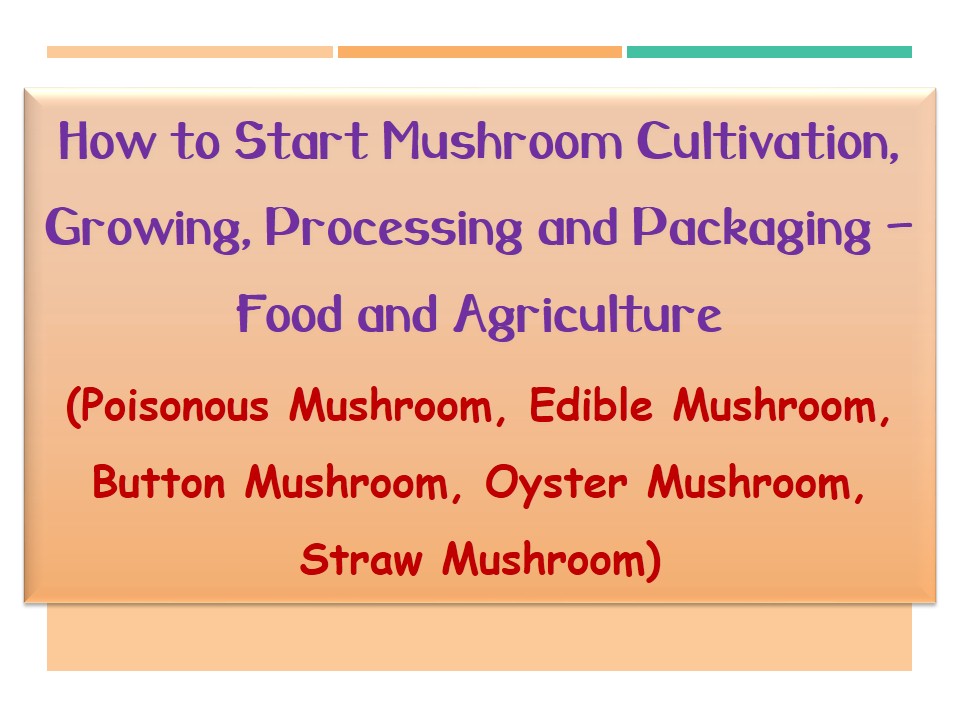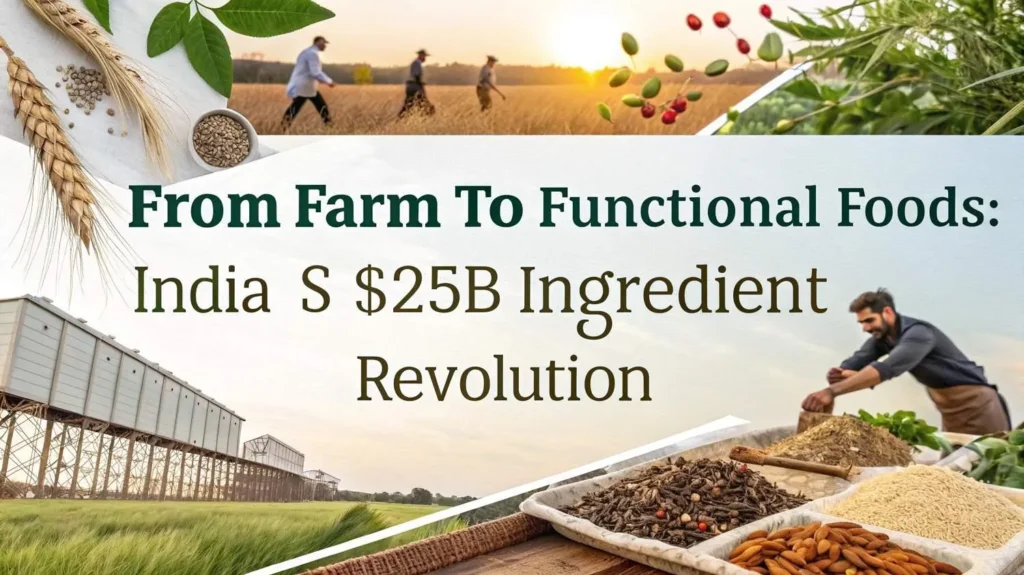
Mushroom cultivation has been recognized as a profitable and sustainable agri-business venture across the globe. In recent years, a significant increase has been observed in the consumption of mushrooms due to their high nutritional content, unique flavor, and medicinal value. Because of its scalability and low land requirement, mushroom farming has been adopted in both rural and urban regions alike. Furthermore, mushroom cultivation can be initiated with limited capital and minimal technical expertise, which makes it an excellent income-generating opportunity for aspiring agripreneurs.
Understanding Mushroom Cultivation: Growing & Processing Explained
Mushroom cultivation refers to the scientific method of growing edible fungi under controlled or semi-controlled conditions. A variety of species are cultivated across the world, with the most common being button mushrooms, oyster mushrooms, and paddy straw mushrooms. Since the demand for organic and functional foods has risen, the mushroom industry has attracted the attention of both small-scale farmers and large-scale agribusinesses.
See Also : Smart Investment Guide
Moreover, several government schemes and training programs have been introduced to support entrepreneurs in this field. Hence, proper understanding of the production process, required inputs, infrastructure, and post-harvest management is essential before beginning commercial operations.
Selection of Suitable Mushroom Species
Before any setup is established, selection of a suitable mushroom variety should be carried out based on climatic conditions, market demand, and production scale. Commonly, the following varieties are cultivated:
-
Button Mushroom (Agaricus bisporus): Widely consumed and suited for moderate to cold climates.
-
Oyster Mushroom (Pleurotus species): Grown easily in tropical and subtropical climates.
-
Paddy Straw Mushroom (Volvariella volvacea): Best suited for humid and warm conditions.
-
Milky Mushroom (Calocybe indica): Adapted to higher temperature zones.
Because each variety requires a specific set of environmental conditions, proper planning is necessary during the selection process.
Substrate Preparation and Spawn Inoculation
In mushroom cultivation, the growth medium or substrate is crucial. Commonly used substrates include wheat straw, rice straw, sawdust, cotton waste, and sugarcane bagasse. These substrates are usually pasteurized or sterilized to eliminate competing organisms.
Once the substrate is prepared, spawn inoculation is conducted. Spawns, which are the mycelial cultures of fungi, are introduced into the substrate in a sterile environment. Subsequently, the mixture is packed into bags, trays, or containers, depending on the scale of operations.
Growing Conditions and Maintenance
After inoculation, the bags or trays are transferred to a growing room where parameters like humidity, temperature, ventilation, and lighting are carefully monitored. For example, oyster mushrooms grow best at temperatures ranging from 20°C to 30°C with relative humidity above 80%.
Furthermore, proper air circulation and shading must be ensured to prevent contamination and encourage uniform growth. During this phase, no direct watering is applied to the growing media. Instead, water is sprayed in the air to maintain ambient humidity.
Harvesting and Yield Management
Mushrooms are harvested when the caps are fully developed but before they start to flatten or split. Usually, harvesting is done by gently twisting the mushroom at the base. Care must be taken to avoid damaging the growing substrate, so that multiple flushes (harvest cycles) can be achieved from the same substrate.
Generally, yields vary depending on the mushroom species, substrate type, and environmental control. A 100 kg dry substrate can yield 80 to 100 kg of fresh mushrooms in a well-maintained setup.
Post-Harvest Handling and Processing
Because mushrooms are highly perishable, immediate post-harvest processing is vital. The harvested mushrooms are sorted, cleaned, and graded. They are usually packed in perforated plastic bags or trays to prevent moisture accumulation. Cold storage facilities are used to extend their shelf life.
In addition to fresh sale, mushrooms can be processed into various value-added products such as:
-
Dried mushrooms (sun-dried or machine-dried)
-
Pickled mushrooms
-
Canned mushrooms
-
Mushroom soup powder
-
Mushroom snacks and chips
With proper processing and packaging techniques, a longer market reach can be achieved.
Required Infrastructure and Equipment
A basic mushroom cultivation setup typically includes the following infrastructure:
-
Growing Rooms: Properly insulated rooms with humidity and temperature control.
-
Spawn Production Lab (optional for large units)
-
Pasteurization Units: For substrate sterilization.
-
Shelves or Racks: For placing grow bags or trays.
-
Watering Equipment: Such as sprayers and humidifiers.
-
Cold Storage: For harvested mushrooms.
For small-scale setups, even thatched sheds or spare rooms can be converted into growing units using polythene curtains and basic ventilation.
Investment and Profitability Estimates
Initial investment depends on the scale of the operation and the species selected. For instance, a small unit cultivating oyster mushrooms on 500 bags can be set up with ?1.5–2 lakhs (approximately USD 2,000–2,500). Operational costs include raw materials (spawn, substrate), electricity, labor, and packaging.
With proper management, yields of 20–25 kg per day can be achieved, and sales revenue can range between ?60,000 to ?1,00,000 per month depending on market rates. Thus, mushroom cultivation is considered a high-return, low-investment venture.
Marketing and Sales Strategy
Although local markets, supermarkets, and vegetable vendors serve as immediate outlets, direct-to-consumer models are also gaining popularity. Farmers’ markets, online orders, and subscription boxes are being utilized effectively.
In addition, collaborations with restaurants, hotels, and catering services have enabled consistent demand generation. Branding and attractive packaging have further enhanced the acceptability of processed mushroom products.
Digital platforms, social media, and food aggregators can be used for targeted promotion. Certifications such as organic and FSSAI approval also add credibility and trust among customers.
Training and Government Support
To encourage mushroom cultivation, various government agencies, agricultural universities, and NGOs offer training programs. These include:
-
Skill development workshops in spawn production and processing
-
Subsidies and grants under agri-business development schemes
-
Technical assistance for infrastructure setup
-
Loans under PMEGP, NABARD, or Agri-Clinics Schemes
Furthermore, access to Mushroom Research Centers and Krishi Vigyan Kendras (KVKs) provides ongoing support and knowledge dissemination to farmers.
Challenges and Risk Management
Although mushroom cultivation is highly profitable, several challenges must be addressed:
-
Contamination Risks: Poor hygiene can lead to fungal and bacterial contamination.
-
Climatic Dependence: Sudden weather changes can affect yields in open setups.
-
Market Fluctuation: Prices of fresh mushrooms are influenced by seasonality.
-
Limited Shelf Life: Quick transportation and storage infrastructure is needed.
To mitigate these, it is advised that good agricultural practices (GAP) are followed. Quality control and integrated disease management (IDM) strategies are also crucial.
Expansion Opportunities
Once experience is gained in basic mushroom cultivation, expansion can be considered into:
-
Spawn production units (high-margin business)
-
Training centers and consultancy services
-
Franchise-based mushroom marketing
-
Value-added product lines
-
Export of processed mushrooms
Because the global demand for mushrooms and nutraceuticals is rising, immense potential exists for export-oriented units.
Sustainability and Environmental Benefits
One of the key advantages of mushroom cultivation lies in its eco-friendliness. Waste biomass like straw, husk, and paper can be converted into productive input (substrate). Furthermore, post-harvest spent substrate serves as excellent organic manure or cattle feed.
Thus, it contributes positively to the circular economy, soil health, and waste management. Additionally, minimal water usage makes it suitable for areas with limited irrigation options.
Final Thoughts on Getting Started
Aspiring mushroom growers are encouraged to begin with pilot trials and gradually scale up. A proper business plan, technical knowledge, and market linkage should be established before investment. The future of mushroom cultivation remains promising due to increasing awareness about its health benefits and culinary versatility.
See Also : Soaps & Detergents Manufacturing
Conclusion
Mushroom cultivation has emerged as a profitable, sustainable, and scalable agribusiness opportunity. With minimal land, moderate investment, and technical support, a wide range of entrepreneurs can venture into this field. Because the production process utilizes agricultural waste and promotes eco-friendly practices, environmental sustainability is ensured. Moreover, multiple income streams—ranging from fresh mushroom sales to value-added products and spawn production—can be generated. Therefore, by adopting scientific practices and innovative marketing strategies, mushroom cultivation can be transformed into a long-term, viable business.





